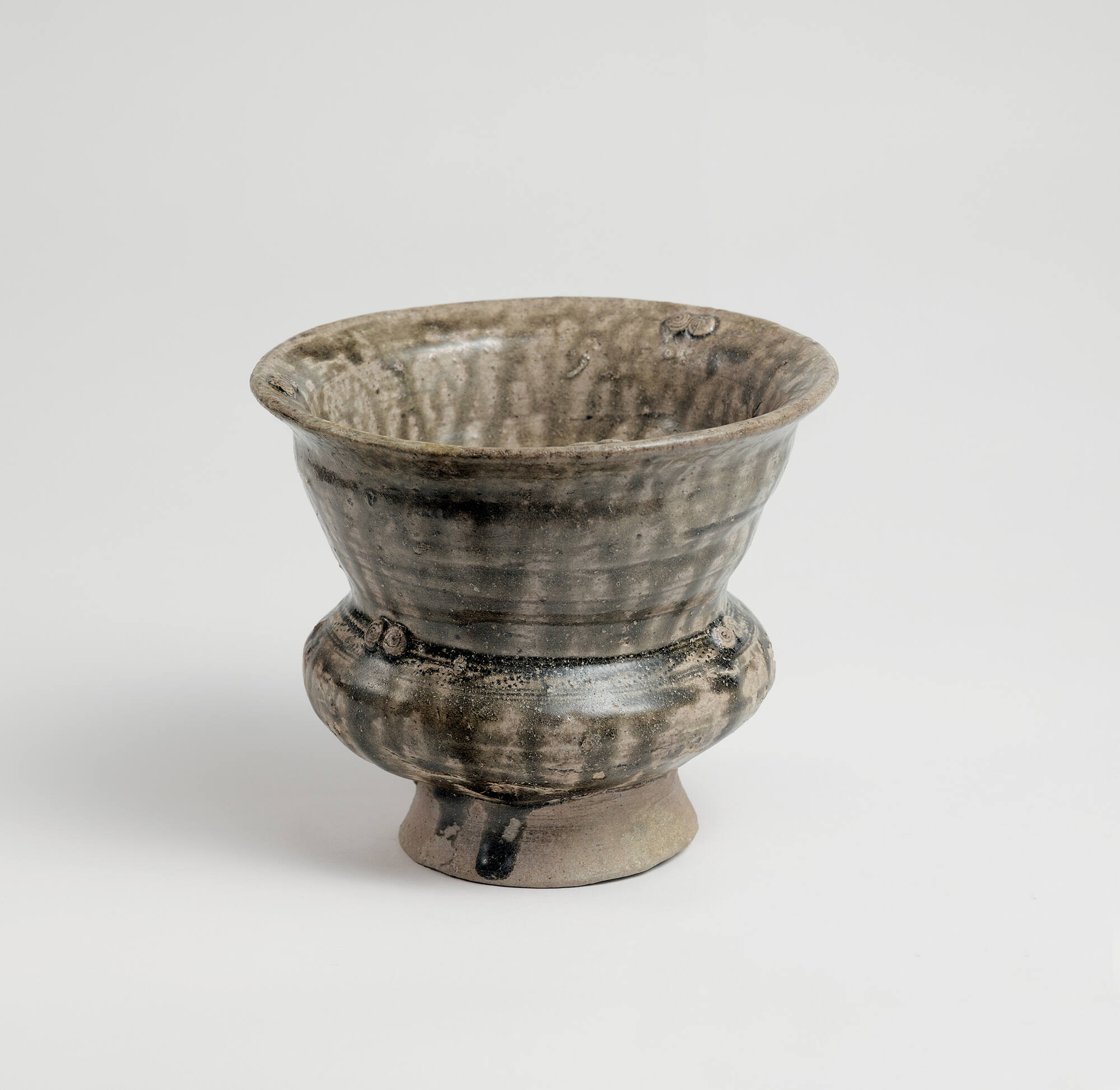Object Details
Culture
China, Zhejiang or Jiangsu province
Western Zhou dynasty (ca. 1050-771 BC)
Date
10th or 9th century BC
Medium
Glazed stoneware
Dimensions
Height: 5 1/4 inches (13.3 cm)
Diameter: 6 1/8 inches (15.6 cm)
Credit Line
Gift of F. Eunice Shatzman, Class of 1949, and Herbert F. Shatzman
Object
Number
2008.072.001
As Chinese potters improved their firing capabilities to achieve the high temperatures necessary for(…)
As Chinese potters improved their firing capabilities to achieve the high temperatures necessary for producing stoneware, they would have observed that wood ash from the fire settled on the vessels and formed a natural glaze. Soon they began to apply wood ash directly on the vessels to create a deliberate glaze. The earliest Chinese kiln sites known to have produced glazed stoneware have been found in Jiangxi, Jiangsu, and Zhejiang provinces. An important discovery of Western Zhou period (1027–771 BC) glazed stoneware occurred in 1959 at Tunxi, in southern Anhui province, where two tombs of mound construction yielded seventy-one glazed stoneware vessels, along with bronze ritual vessels and implements made of jade and stone. Some of the ceramics discovered in these tombs had brownish glazes, while others had green glazes. Iron oxide in the glaze produced the two colors: the lower percentage of iron resulted in green color. This zun beaker is similar to excavated vessels from the Tunxi finds.













